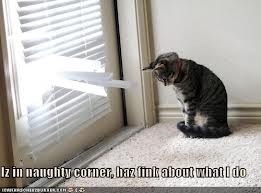You’ve heard it before… You can’t write, if you don’t read.
It’s the truth!
Cross my heart!
Whether you like what you read, or the novel is a wall-banger/quick-click-archive (and you resist throwing your e-reader)… Reading is the only way you’re going to stay on top of your game in the publishing industry.
Beyond knowing what’s hot and what’s not, you learn from Every. Single. Author.
I read THREE books between Friday evening and today. (Yes, I just closed THE END on the third book at o’dark thirty this morning and I’ll HATE myself for staying up this late. And maybe I should have been writing instead. BUT…)
Here’s what I took away from reading…
Book 1: (And no, I’m not naming books/authors, because I’m not an asshat.)
I loved book 1′s author’s voice. I really did. It was engaging, fun, very true. Because of her amazing grasp on voice, I had to remind myself to to make sure my writing was as fun and engaging as hers was. But come about chapter 5, I found myself skimming, hard-core. The pace lagged. The characters started acting out of, well character. The premise was intriguing, and I finished the book, but I saw fatal flaws that could make a reader second guess buying another book.
Hmmmmm…
Lesson one from this read? Remember my characterization and pacing.
Book 2:
I’m not going to go into great detail, but the plot holes were big enough for the Starship Enterprise to side-swipe through, with a full 360, without fear of damage.
Yeah, it was that insane.
The worst part was, I think this author had the mechanics of characterization nailed. I mean, really NAILED. The hero was to-die-for! Sweet in the right moments, sexy in others, tough when he needed to be – and sometimes when he didn’t. Alpha male to the max. The whole freakin’ package. Which made the plot issues that much more damaging. Will I buy again? Maybe. But it reminded me of the color coordination fellow Musetracker, Marie Claude-Bourque, uses to make sure she’s using everything in her writing. When she goes through her manuscript, she uses a color for emotion, a color for action, a color deep POV, a color for setting, a color for plot… Everything has a color so she can see what’s missing/wrong and needs work. This author would have benefited from using a color theme for her plot, because from beginning to end, a reader has to understand the mechanics moving each character.
Lesson two: PLOT! If it has a great big black hole, it ain’t workin’.
Book 3:
I. Want. To. Be. This. Author.
She nailed it from page one to the very last page and left me wanting more. I not only read this novel in record time, but I immediately went to her Goodreads page and reviewed it, then traveled to her webpage and drooled over the next books I wanted on my TBR pile. Even better (for her)… I bought one of her novels and started it ahead of others. The only thing that stopped me from reading was the fact that I had a blog post to do.
So?!?
Do you carve out time for writing?
If you don’t… To the corner with you!
Happy writing/reading!
Candi










